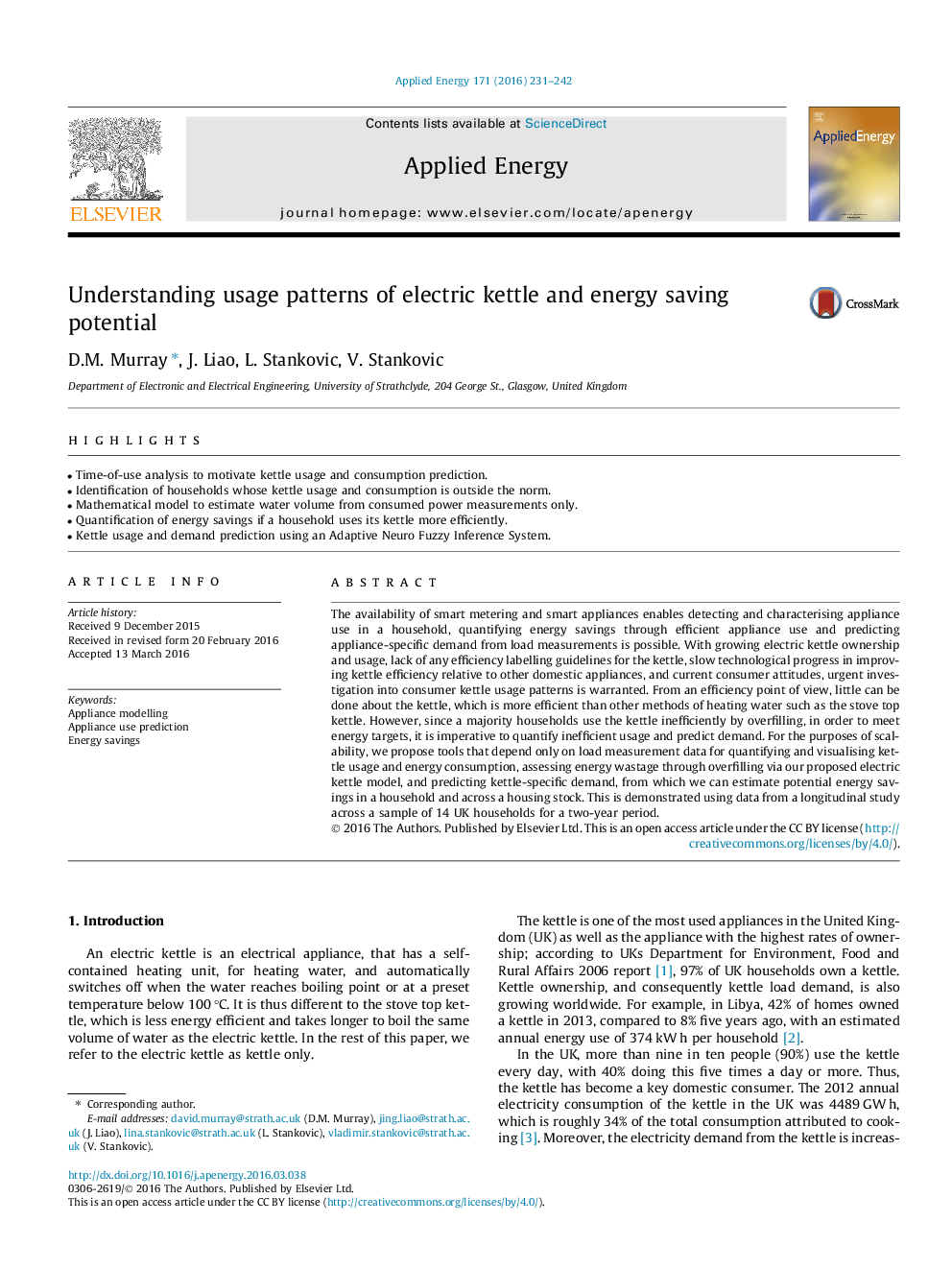| Article ID | Journal | Published Year | Pages | File Type |
|---|---|---|---|---|
| 6683284 | Applied Energy | 2016 | 12 Pages |
Abstract
The availability of smart metering and smart appliances enables detecting and characterising appliance use in a household, quantifying energy savings through efficient appliance use and predicting appliance-specific demand from load measurements is possible. With growing electric kettle ownership and usage, lack of any efficiency labelling guidelines for the kettle, slow technological progress in improving kettle efficiency relative to other domestic appliances, and current consumer attitudes, urgent investigation into consumer kettle usage patterns is warranted. From an efficiency point of view, little can be done about the kettle, which is more efficient than other methods of heating water such as the stove top kettle. However, since a majority households use the kettle inefficiently by overfilling, in order to meet energy targets, it is imperative to quantify inefficient usage and predict demand. For the purposes of scalability, we propose tools that depend only on load measurement data for quantifying and visualising kettle usage and energy consumption, assessing energy wastage through overfilling via our proposed electric kettle model, and predicting kettle-specific demand, from which we can estimate potential energy savings in a household and across a housing stock. This is demonstrated using data from a longitudinal study across a sample of 14 UK households for a two-year period.1
Keywords
Related Topics
Physical Sciences and Engineering
Energy
Energy Engineering and Power Technology
Authors
D.M. Murray, J. Liao, L. Stankovic, V. Stankovic,
